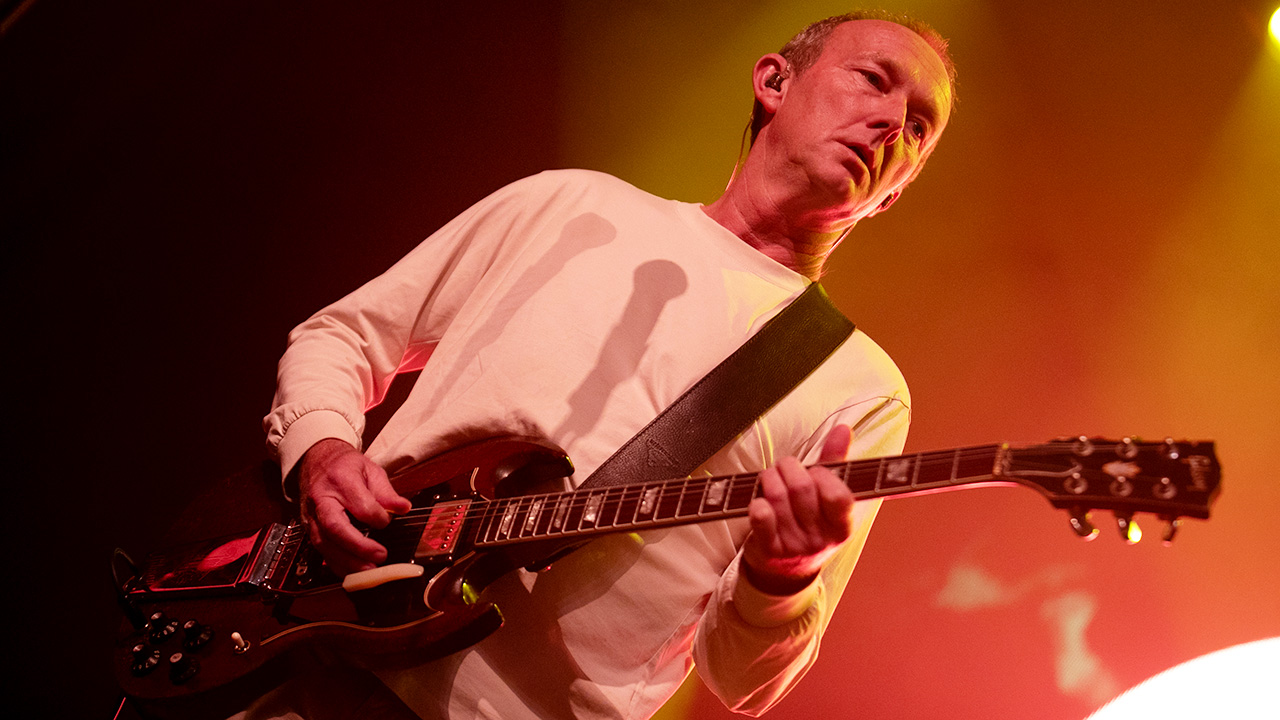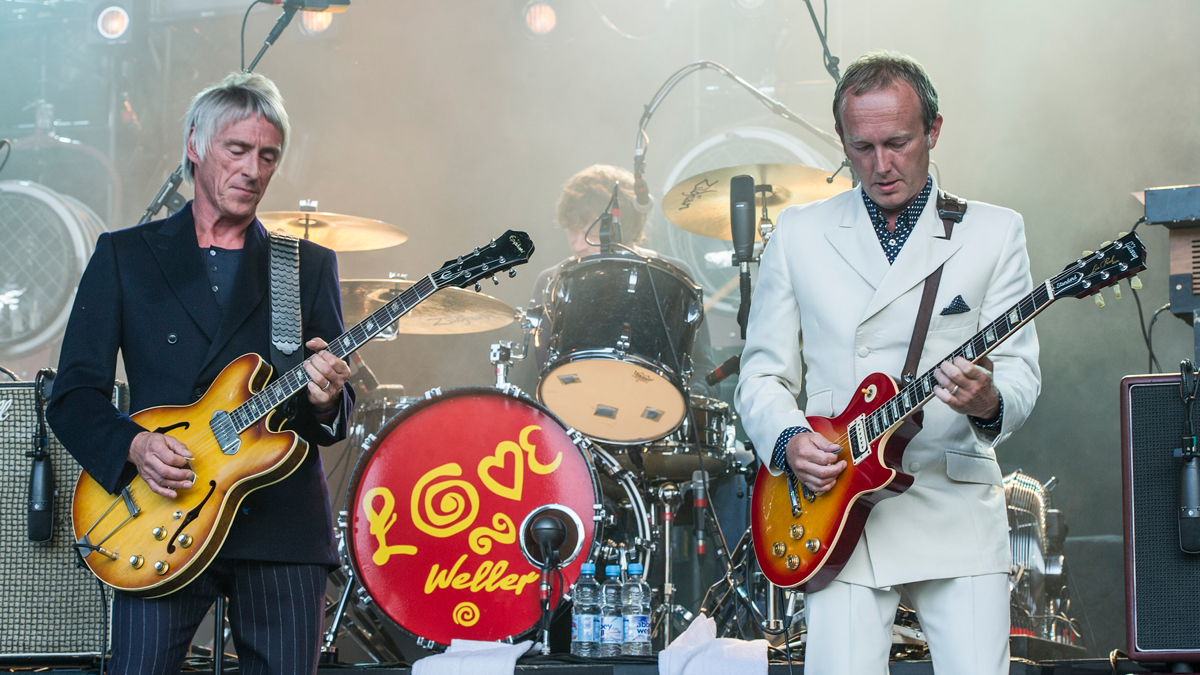
As a sharp-dressed modern-day mod, Steve Cradock took the music of the ‘60s British Invasion and transported it to the ‘90s as the lead guitarist of Ocean Colour Scene.
But that’s not all – he’s long played sideman to Paul Weller, which only enhances his status as a god of the mods. Of course, Cradock wasn't alone in his exploits as bands like Oasis, Blur, and The Verve did their part to make the ‘90s a vintage decade via timeless riffs, gain-soaked solos and feedbacking tube amps.
Ocean Colour Scene’s 1996 magnum opus, Moseley Shoals, features classics like The Riverboat Song, The Day We Caught the Train and One for the Road – making it obvious why Cradock’s influence looms large. But he doesn't see it that way, telling Guitar World: “Having an ego about what I’ve done doesn’t interest me. I just love playing guitar.
“Seeing as there are so many players still out there, I’m still surprised that people do dig what I’m doing. I’ve learned it’s not about how good you are – it’s the other stuff like being a good band member and being good with melodies that’s important.”
Despite being the proud owner of a timeless discography, Cradock is still at it. And the word is Ocean Colour Scene are working on their first album in a decade.
“It’s been too long!” muses Cradock. “The demos sound great. So hopefully, the year ahead will be great, and by the end of it, we’ll have that next album together. I’m just happy to be doing what I love, and I’m thankful people still dig it...”
What first attracted you to the guitar?
“It would have been a TV program in England called Top of the Pops. It was the late ‘70s and there wasn’t the amount of bullshit out there like we have these days, from a social aspect. It was more that you went out, played football, rode your bike or listened to music. The options were narrow, and it was music that caught my ear.”
What types of guitars were you using by the time you formed your first group, The Boys?
“I had a Fender Nocaster which had a blank headstock. But it was still at the beginning for me – I wasn’t even calling myself a guitarist yet. I was just strumming chords and making noise. It was basic; the pendulum hadn’t swung yet for me.
“I had my Telecaster, and I paired that with a Fender Twin Reverb. That’s all I had back then. But it was enough because I loved the loud sound – especially at that young age. I was 16 and the rawness of it all was so exciting.”
You met Paul Weller while still a member of The Boys, right?
“I met Paul when I was 17. I had gone down to Jukebox Studios in Marble Arch, London, and played him some of my demos. He was very kind but said they sounded dated, and we were trying too hard to be like The Jam, which I was. But that was the catalyst, and he remembered me when we recorded Ocean Colour Scene at his studio.”
What led you to join Paul’s band in the early ‘90s, after Ocean Colour Scene debuted?
“Well, you’d have to ask Paul why he wanted me, but it came down to him needing a second guitarist, and for whatever reason he liked how I played. Once we went into rehearsals, his work ethic was something I’d never seen.
“Paul had me playing guitar seven days a week, and I was learning new things, chords, and styles, which made me a better player. You can hear how I’d progressed on Ocean Colour Scene’s second album, Moseley Shoals. It’s an example of how you’ll improve if you apply yourself and practice.”
What did your rig look like as you were recording Moseley Shoals?
“By then I was using a Gibson Les Paul and Marshall amps. But it’s weird – I’d chased that sound, but it’s not something I initially liked growing up. As we were doing that album, it became apparent that the combination of a Les Paul and a JCM800 fit the songs.”
And that’s very apparent on a song like The Riverboat Song.
“Right? But that riff… it’s almost childlike. It’s a repetitive nagging line. The only thing I can compare it to that I would have been listening to the timeline is Green Onions [Booker T. & the M.G.’s] or maybe What’d I Say by Ray Charles. It’s a great riff, but any kid can play it because it’s so easy. It’s not very muso, and there’s nothing clever. But it’s memorable.”
The Riverboat Song has a great riff, but any kid can play it. It’s not very muso, and there’s nothing clever. But it’s memorable
What was your overall songwriting process like back then?
“We used to sit in a room and record everything we were doing. I didn’t rehearse much – it was whatever happened in the room. Any melodies present would have literally come from my mind the second I played them!
“As far as solos, I’ve got to be honest: I wouldn’t have thought about them much. I’d turn up, light a spliff, open a beer, and crack on. I’d try to play something that sounded good, and if I did I’d run with it.”

Did the success of Moseley Shoals catch you by surprise?
“We weren’t expecting it. We’d been at it for five years, and after the failure of the first album it certainly was a blessing. So, we were hoping we’d make it, and to have it do as well as it did was a good boost for the ego. Maybe we were ready for it, but that sounds arrogant, right?
“And looking back, Moseley Shoals turned out to be an important album during a critical time. Music was big news again, and we were a part of it. It sounds cliché, but it was our ‘60s. It was a time when everything was possible.”
Paul Weller gifted you a beautiful Rickenbacker 300 in the late ‘90s. Did you use that on any Ocean Colour Scene records?
“Yes! It was the same one he used when he was in The Jam. It was a dream come true to have that guitar, and it took me by surprise when he gave it to me for my 30th birthday. I couldn’t believe it – it was this fantastic symbol from his days with The Jam.
“I used it on One from the Modern and Mechanical Wonder. It’s a great guitar, but I don’t use it anymore because I’m scared. I don’t want anything to happen to it – but I should use it. I don’t see the point in keeping a guitar to store it.”
What does your main touring rig look like these days?
“I’ve been using Blackstar amps for a long time. I love those amps. When Joel Richardson – who runs Blackstar and used to work at Marshall – left Marshall, one of the first-ever Blackstar amps made it into my rehearsal room. From that day onward, I went with them over my Marshall JCM800, which I’d loved.
I love delays and have a Leslie cabinet, but not much else. I like to keep things stock
“As for effects, I only get into those a little. I love delays and have a Leslie cabinet, but not much else. I like to keep things stock. But if I do use pedals, I like Boss stuff. Their DS-1 Distortion and BD-2 Blues Driver are great pedals. Those pair well with the Gibson SGs that I’ve been using for the most part.”
What’s next for you?
“We haven’t done an Ocean Colour Scene album in 10 years, so we’re overdue. We’ve got about three songs as demos, which we like. So we’re moving in the right direction. And Paul has an album coming out in May of ’24, and we’ll tour for that. Stay tuned!”







